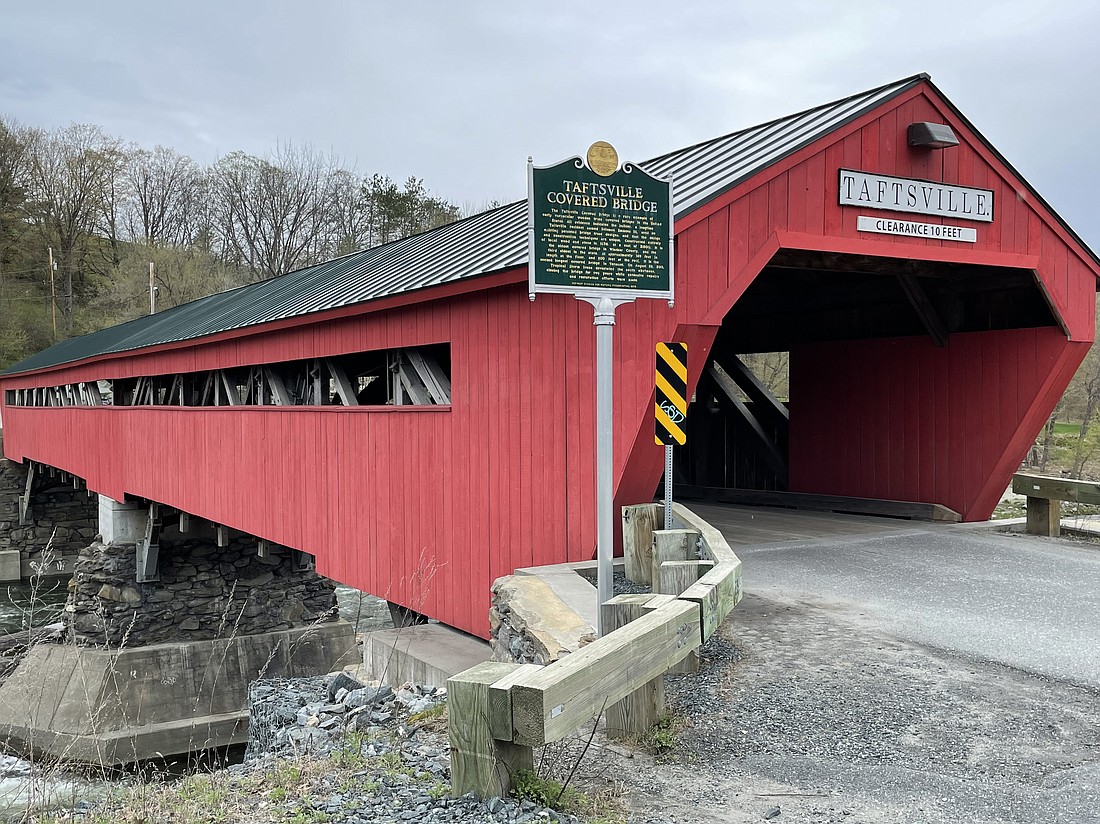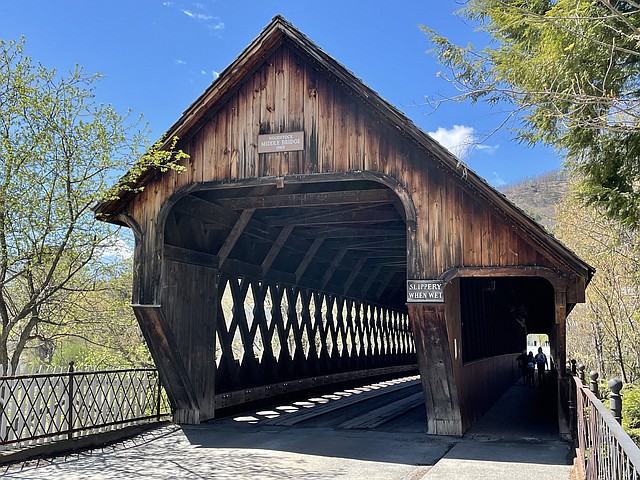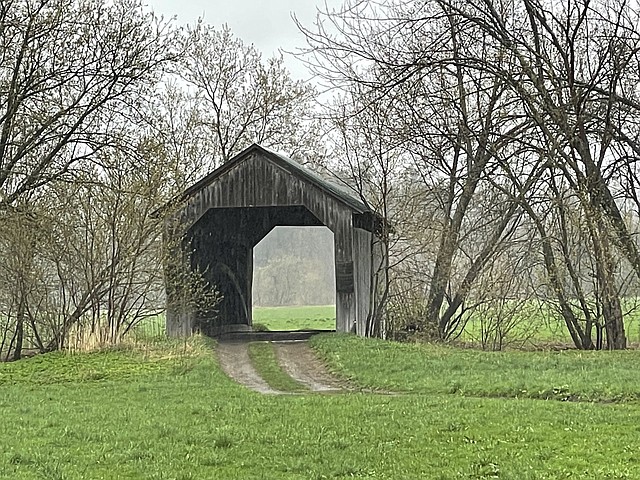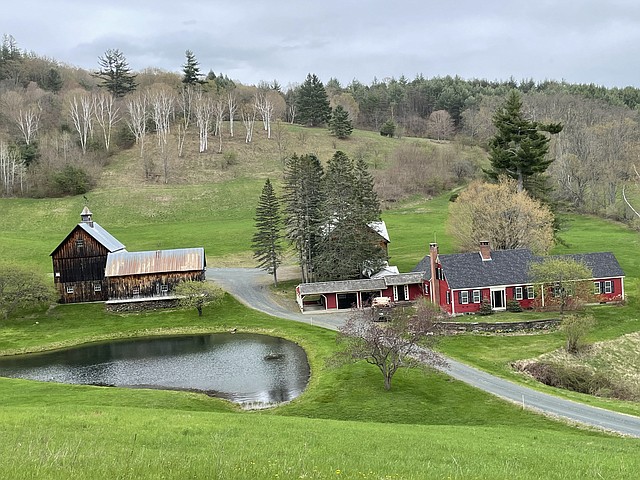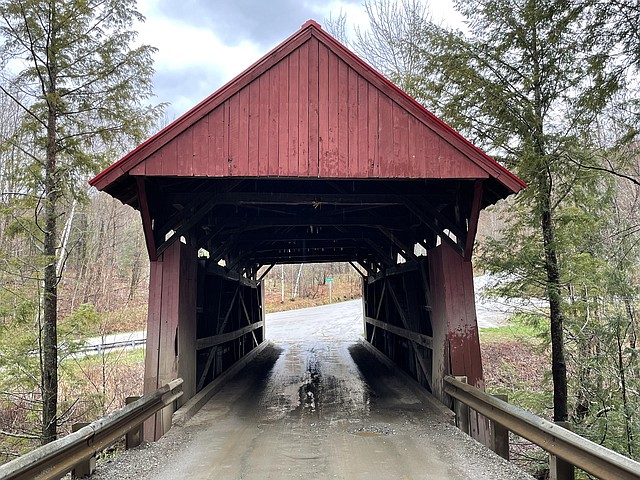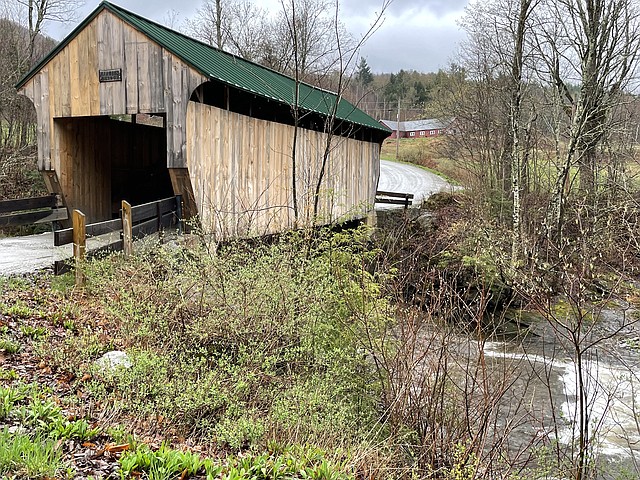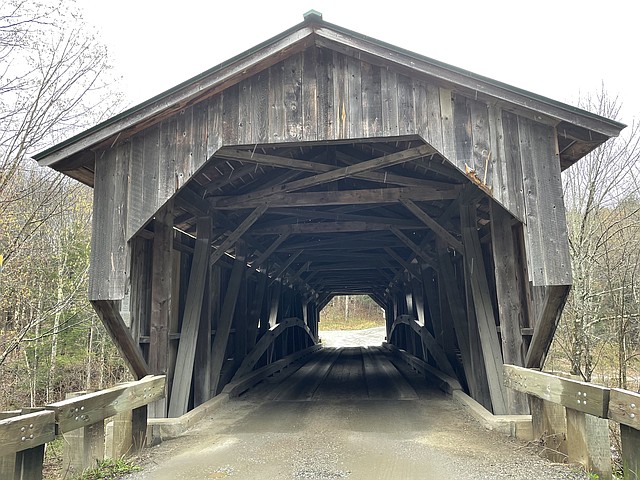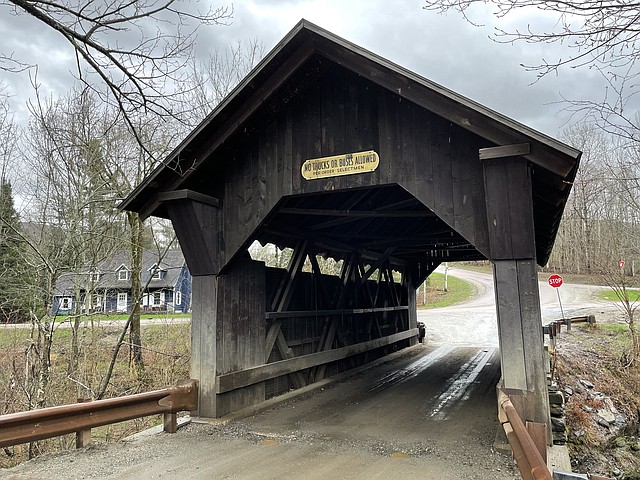Covered wooden bridges are iconic Vermont
August 2, 2021 at 6:00 a.m.
The covered bridges of Vermont are often found on postcards, in books and stories about the state and on many different social media sites. They’re the settings for idyllic, scenic drives, weddings and ghost tales.
I had long drooled over such images and yearned to see the bridges in person. Last year, I had planned a trip to the area to finally make my dream a reality, but of course that didn’t happen. With the advent of Vermont easing its Covid restrictions for fully vaccinated travelers in spring, I set out to accomplish my goal.
Vermont is home to more than a hundred of these historic structures and as such, it boasts more covered bridges per square mile than any other state in the country. At one time, there was upwards of five hundred, but unfortunately many were lost to the major flood of 1929, as well as to modernization and vandalism.
Built of timbers from forests and fashioned by craftsmen, the bridges date from 1820, with the majority built during the mid and late 19th century. They were primarily constructed to keep snow off the bridge roadway during winter, as a sloping roof allows snow to fall into the river. They also provided shelter for travelers during storms. Additionally, the coverings protected the bridges themselves. Exposure to harsh weather elements can lessen the life of a bridge, however, if covered, it can last a century or more. Sides and roofs made the structures more durable. Sides, in particular, helped farmers get their cattle over the bridge, as the sight of rushing water made them balk.
The bridges are undeniably romantic, complete with bucolic backdrops and charming hamlets. It’s obvious why these weathered beauties are magnets to visitors, who enjoy photographing them with avid enthusiasm. They are iconic symbols of our heritage and their appeal lies in their ability to evoke the spirit of the past to a simpler way of life. You can easily picture horses and buggies making their way over the bridges on rudimentary dirt roads through the pastoral countryside.
During my trip, I stopped at numerous covered bridges and photographed them from every angle. Each one was unique, from size and span to its history, color and backdrop. Cambridge Junction Bridge, for example, was created to access a railroad junction and the surrounding village of Cambridge Junction. It has a whopping span of 135 feet, making it one of the longest spans of its type in the U.S. Gates Farm Bridge, on the other hand, only reaches sixty feet and peacefully sits in a cornfield on a farm.
Then there’s Red Covered Bridge, which crosses a picturesque gorge. One of the last to be built during the historic period of covered bridge construction in the state, it possesses a queen post truss design and red metal roof. This design style was used when the structure needed to cover a larger span. This bridge is listed on the National Register of Historic Places.
Jaynes Covered Bridge has several names. When it was built in 1877, the Jaynes family lived nearby. It’s also known by Upper Bridge and Codding Hollow due to its location. And then some people call it the Kissing Bridge, which from what I’ve learned, is a common moniker for many covered bridges. The idea is that the bridge provided a discreet place for couples to kiss without being seen by others.
Bridges with multiple names are not unusual in Vermont. Grist Mill Bridge is another case in point. It’s called Grist Mill because it lies just past an old grist mill building, but you might also hear it referred to as Bryant Bridge (someone named Bryant lives or lived in the area), Canyon Bridge (it’s situated on Canyon Road) and Scott Bridge (this could be the name of the man who built it). In truth, the builder’s actual identity is unknown, making the bridge a bit of a mystery. And who doesn’t love the scent of an elusive past!
A favorite among visitors is Gold Brook, or Emily’s Bridge. The 48-foot Howe truss bridge spans the Gold Brook and is famous for being Vermont’s only haunted covered bridge. This style of bridge was prominent across the country, as it was strong and relatively easy to build. It was also innovative because of it used vertical iron rods. The rods were secured with bolts between the diagonal beams and if the joints loosened, the bolts could be tightened. This design solved a major problem with bridges made entirely of wood.
As for the bridge’s ghostly notoriety, there are a few versions that revolve around the “Legend of Emily.” The most prevalent tells of a farmer’s daughter, Emily, who was jilted by her intended groom on the day of their marriage. Despondent, she took her life at the bridge. Some believe that Emily’s spirit continues to haunt the bridge, especially on moonlit nights, when she waits for her man to return.
Other folks remember the story as a tale concocted in the presence of some suggestible college students during the 1970s, when renewed interest in witchcraft was all the rage in schools across the nation. Young Emily, deserted by her fiancé, does not commit suicide, but rather rides back across the bridge in a state of uncontrolled fury. Unfortunately, her horses panicked and she was thrown from the wagon to her death.
Wooden covered bridges are revered and beloved sentinels in rural America, and hopefully they can continue to be preserved to withstand the test of time.
Debbie Stone is an established travel writer and columnist, who crosses the globe in search of unique destinations and experiences to share with her readers and listeners. She’s an avid explorer who welcomes new opportunities to increase awareness and enthusiasm for places, culture, food, history, nature, outdoor adventure, wellness and more. Her travels have taken her to nearly 100 countries spanning all seven continents, and her stories appear in numerous print and digital publications.
